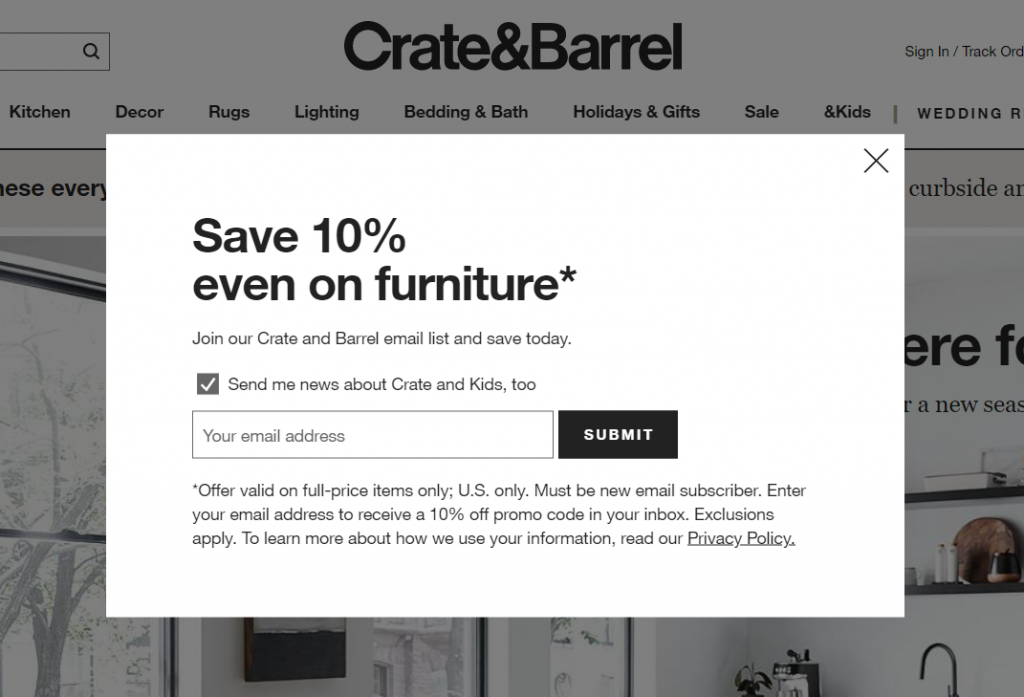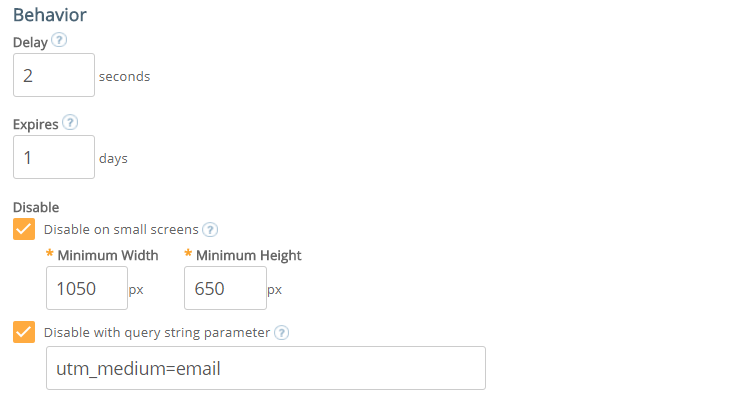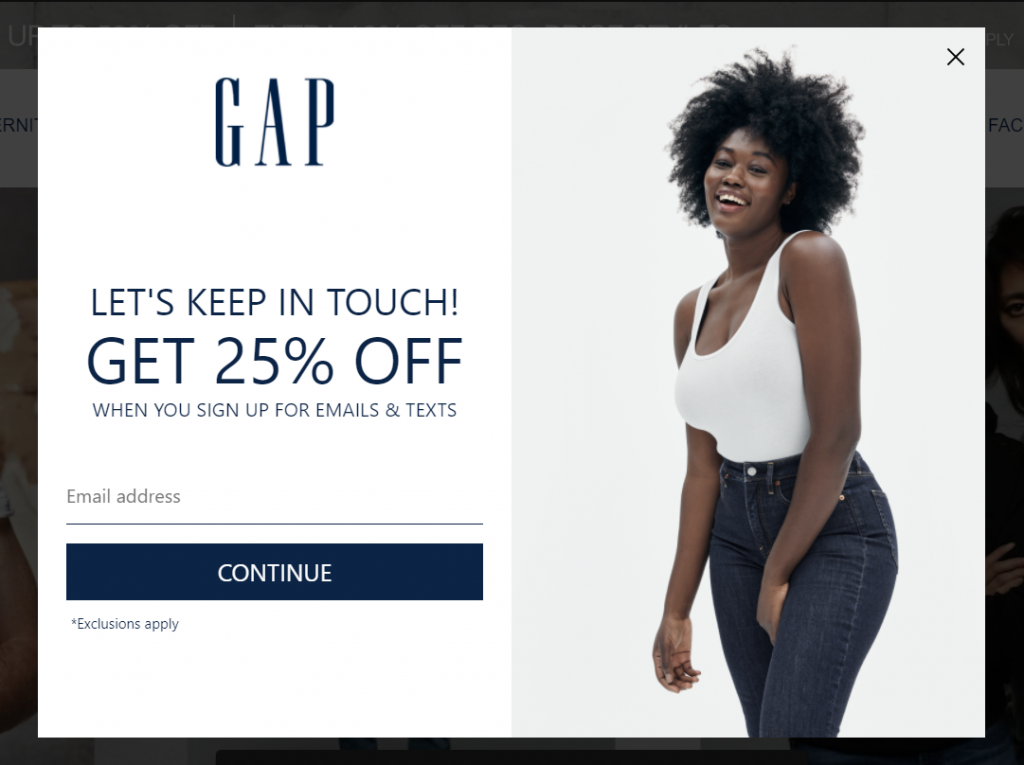By Ken Magill for emfluence
“I love it when something pops up in my face on a website and won’t let me continue what I was doing until I deal with it,” said no one ever. That no one likes being interrupted should be a top consideration when deciding how to employ modals, or pop-ups that disable the content on a website and require some action before the site visitor can get on with whatever he or she was doing. However, deployed thoughtfully, modals can yield great benefits to both the brand and site visitors.
The key feature of modals is focus. The site visitor must focus on the modal and deal with it before they can go back to the task they were trying to complete. Sometimes a modal is necessary, such as a warning box letting a visitor know they haven’t supplied a key piece of information, or an “are-you-sure?” warning. But modal content employed properly is also highly effective at other tasks, such as acquiring email addresses, promoting events, or driving other promotions.


A key element of deploying modals is timing. When they should appear is often determined by the length of time the average visitor spends on a site’s pages. One possibility is to set the timing for 15 seconds before the average visitor clicks away. Or if the average view is several minutes long, maybe set the pop-up to appear one minute into the visit. Another consideration is frequency. Some modal content can get annoying if it appears too often. For example, it might be wise to cap a “leave-us-a-review” modal at once per month. Email acquisition modals should be capped at once per session. Urgency is another consideration. As an event draws nearer, the modal content promoting it should probably appear more frequently.

As in all things digital marketing, they key to employing modal content is testing and measuring. For example, not all email addresses are equal. The quality of addresses can vary wildly by acquisition source. It is always wise to divide the house file into quintiles and see by source where emails fall in terms of key performance metrics. If the modal-acquired addresses are falling in the bottom two quintiles, maybe it’s time to rethink that box, even if only in terms of when it appears. Or maybe certain domains are feeding a high percentage of garbage addresses. Block those domains and see if the average value of modal-acquired addresses increases.
Ideally, a modal will be relevant to the visitor and offer value. In business-to-consumer marketing, free shipping and discounts off first purchases can be enough to get visitors to take the desired action. In business-to-business marketing, early or exclusive access to content may be the ticket.

One of the great challenges in marketing is no one likes a sales pitch, yet the sale is rarely made without a pitch of some sort. In order to get over the annoyance hurdle, any pitch must convey value that outweighs the annoyance. Think of non-essential modals as auto-generated sales reps. Have you armed them with a decent pitch? Have you timed them so their appearance is relevant to the task at hand?
Like any other sales-and-marketing tactic, modals can damage a brand when used too aggressively or at inappropriate moments. But used wisely, they can be a crucial element of any marketer’s arsenal.
To learn more about modals and how you can create and deploy them using the emfluence Marketing Platform, contact us at expert@emfluence.com!


